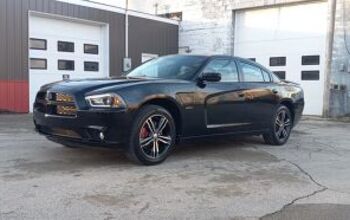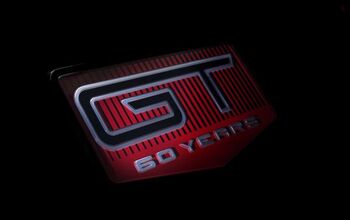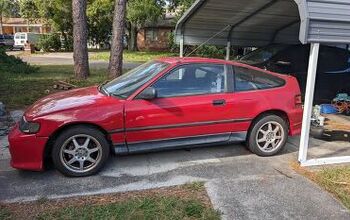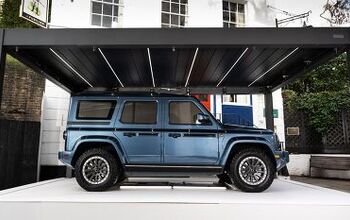Volkswagen of America's New Sales and Marketing Chief: Skoda's Werner Eichhorn
One month ago, former Hyundai Motor America sales vice president Derrick Hatami departed Hyundai and ended up in a similar role at Volkswagen of America: executive vice president for sales and marketing.
Hatami moved into his new office on June 12, 2017. Less than two months from now, and two years after Volkswagen’s diesel emissions scandal erupted in September 2015, Hatami’s new boss will move into his new office. Imported from Skoda, Werner Eichhorn moves to Volkswagen’s North American region as the chief sales and marketing officer.
Together with Hinrich Woebcken, who became CEO of Volkswagen in North America in April 2016, seven months after broke, Hatami and Werner Eichhorn form the nucleus of an all-new sales team at Volkswagen of America.
And not a moment too soon.
Compared with a year ago, Volkswagen’s U.S. sales are notably higher in 2017. Through the first-half of 2017, Volkswagen volume is up 8 percent, a positive sign in a market that’s fallen 2 percent from record 2016 levels.
But Volkswagen is far, far, far removed from its goals of 800,000 U.S. sales in 2018. And only compared with 2016, when Volkswagen was suffering a severe drain on its reputation and a severe shortcoming in terms of inventory — many of its cars couldn’t legally be sold — does 2017 appear positive. Relative to the first-half performance of Volkswagen prior to the diesel emissions scandal, in 2013, 2014, and 2015, for example, Volkswagen sales this year are down 22 percent, 10 percent, and 8 percent, respectively.
Of course, if Volkswagen was ever serious about that 800,000-unit sales goal, the company hasn’t considered it realistic for some time. As early as 2014, then CEO Michael Horn told The Detroit Bureau, “The vision is right, long-term. But timing is the huge challenge.”
Volkswagen is, however, poised to make major in-roads in the latter-half of 2017. And those in-roads won’t be located merely as a result of year-over-year figures that reflect a comparison with the doldrums of 2016, when Volkswagen’s U.S. volume fell to a six-year low (and the U.S. auto market soared to new heights.)
The launch of the three-row Atlas, Volkswagen of America’s first three-row utility vehicle and the continent’s first three-row Volkswagen since the Dodge Grand Caravan-based Routan died in 2014, is already spurring sales. In June, for instance, the Atlas outsold Volkswagen’s two existing utility vehicles, Touareg and Tiguan, combined, and accounted for nearly one in ten Volkswagen sales.
Later in 2017, Volkswagen will also launch the new three-row, second-generation 2018 Volkswagen Tiguan, a right-sized alternative to the Honda CR-V, Nissan Rogue, and Toyota RAV4.
Perhaps not unwisely, Volkswagen will allow the old Tiguan, to be known as the Tiguan Limited, to hang around, providing dealers with an alternative to subcompact crossovers before Volkswagen launches the T-Roc.
Thus, Volkswagen will finally have a meaningful SUV lineup, a boon to the brand’s fortunes that will coincide with the early part of the Eichhorn/Hatami era. It will be difficult for the duo to not improve Volkswagen’s sales.
Already, we’ve seen signs of tacit approval at rival automakers stemming from Volkswagen’s post-emissions handling. Vinay Shahani, a former Volkswagen marketer, was poached in May by Toyota.
As for Werner Eichhorn, his more than 35 years in the Volkswagen Group has included stints at Audi, FAW-VW in China, Volkswagen sales and marketing in the brand’s home market, and as sales and marketing board member at Skoda. Werner Eichhorn now takes over in the U.S., Canada, and Mexico for sales, after sales, and customer experience for the Volkswagen brand.
[Images: Volkswagen]
Timothy Cain is a contributing analyst at The Truth About Cars and Autofocus.ca and the founder and former editor of GoodCarBadCar.net. Follow on Twitter @timcaincars.
More by Timothy Cain
Latest Car Reviews
Read moreLatest Product Reviews
Read moreRecent Comments
- SCE to AUX Yes, I'll miss it, and it doesn't make sense to kill off your 3rd-best seller. 2023 was its best year since 2018.
- SCE to AUX This was the same car I had (05 xB, stick, "camouflage" color) for 7 years - great car.We called ours "The Lunchbox". I added aftermarket wheels, and the 3rd-party cruise control the dealers could install.It suffered only two failures: bad window switch in week 2 (dealer fixed in 1 hour), bad trailing O2 sensor (fixed myself for $70). Fuel economy was always 28-34 mpg.It was a potential death trap, and ride quality became unbearable after 2 hours. I once did a 10-hour round trip in it and could barely walk after.Traded it for a 2012 Leaf, which was a better car in some ways.
- Bd2 The "e" nomenclature signifies the e-ATPs which BMW is pursuing.
- Dave M. I'm sorry to see any storied name go away. The lifespan of the Malibu has fit perfectly in my lifetime years-wise. Some of the highlights include the first and second generations, the '78 revamp (very clean design), and the 2005 generation. Ford, GM and Mopar gave this segment away by allowing Toyota and Honda a foot in the door and then always having to play catch-up. How hard is it to make a truly competitive sedan at a profit? Obviously, Japan Inc. figured it out.I've driven a few rentals these past years; the Malibu got the job done but honestly the Passat and Altima were my rental preferences.
- Kcflyer actually yes. It's a shame that a product this uncompetitive can still outsell GM's entire EV offerings. Those products have had billions thrown at them. Imagine how nice the new Malibu, Impala, SS, and Lacrosse would be with that kind of commitment.




































Comments
Join the conversation
I don't know how well Skoda will sell in the US. Skoda does sell in Australia, but is has a cult following, especially with the Yeti. I did look at a Superb AWD wagon briefly 8-9 years ago. It was very nice in leather. It had a 3.5 litre VW V6. The Superb wagon back then did 6.5 seconds to 100kph. So it wasn't really a slouch. It took out Prestige Car of the year back then in Australia.
If VW is going to make a comeback in the US, they need to find a niche. The Atlas is doing well, but given how Americans love SUVs, it would be a huge failure if it weren't. VW needs to be the economical, reliable alternative, like it used to. There once was abundant love for VWs; there is now a good measure of suspicion, doubt, disappointment and apathy. They need to be reliable, fun to drive, unique, easy to buy and easy to own, and VW needs buyers to be eager to get a second one. VW used to be that way, then Toyota and Honda became the go-to brands, and Subaru has the brand loyalty that everyone else wants. So inject some Skoda into VW, or carry on with the mediocrity.